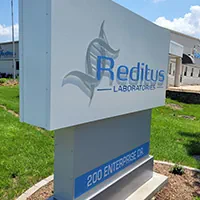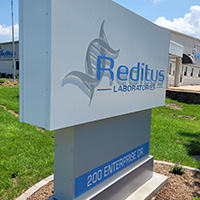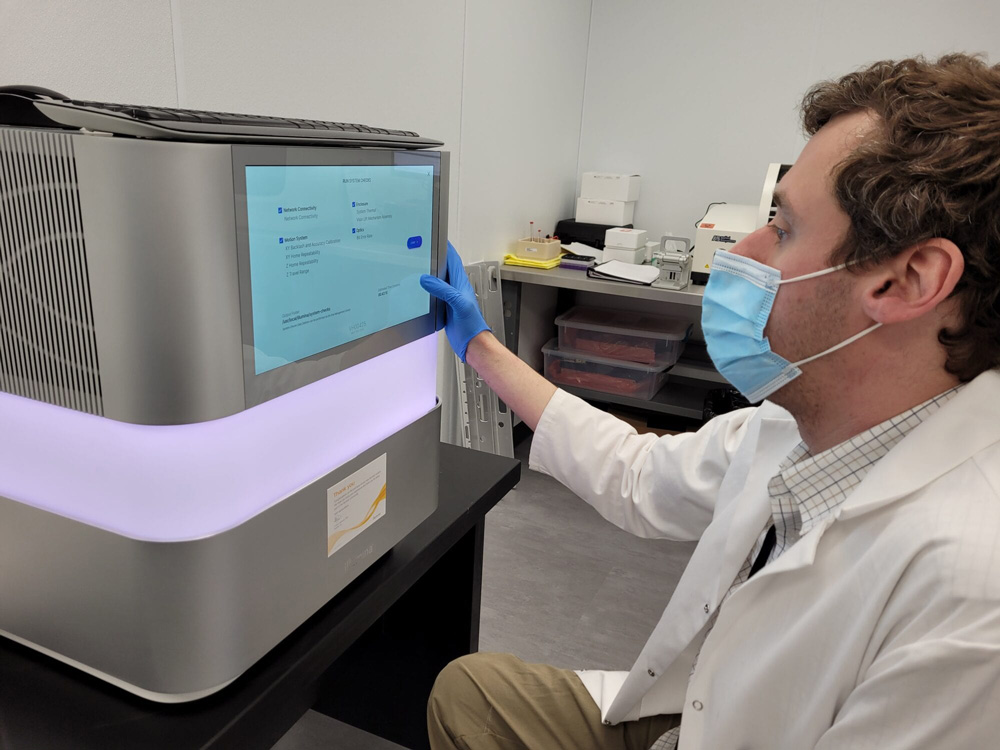Capitalize on Revenue Cycle Management

Medical Lab Management June 2021 – Vol.10 No. 6
Q&A with Aaron Rossi, MD, Reditus Laboratories
Medical Lab Management: How can clinical laboratories capitalize on their technological and human resource capabilities through a business mindset?
Aaron Rossi: Today’s clinical laboratories offer full-service diagnostic testing covering a wide range of medical disciplines. In addition to standard chemistry and hematology services, more advanced serology, cytology, histology, and molecular-based platforms, such as PCR and next-generation sequencing (NGS) have all begun to attend to current clinical needs and are ripe for future potential.
That said, laboratories that are looking to justify and acquire the latest technologies need good clinical utility and the testing volumes necessary to support and grow new services. Laboratory leaders are always looking into novel methodologies to serve our clinical clients, such as extending anatomic pathology and immunohistochemisty (IHC) testing into more oncology-related areas. This is in addition to the considerable time and resources put into COVID-19-related testing over the last year. Therefore, establishing new testing streams through outreach or other methods can increase volumes to necessary levels and establish the lab as a profit center. However, these services must be treated as a business practice, including the attendant need for revenue cycle management (RCM), regulatory compliance, and outreach budgeting. Laboratories cannot afford to provide excellent clinical service to outside clients without also properly and clearly managing the financial side of the relationship.
MLM: How does an RCM platform benefit the laboratory and the outside clients it serves?
Rossi: Among the beneficial aspects of an RCM platform are that it enables both greater transparency into the lab-client relationship and a more refined level of service to outside providers. In our case, the RCM platform is enabling us to create a distinct, client-specific interface that mimics an information system to which the client has exclusive access. This obviously benefits hospital-based laboratories that are looking for a more direct, clear interaction with outreach clients and even satellite labs or off-campus clinical sites within a health system.
MLM: How can provider clients engage with the laboratory in accessing testing data?
Rossi: We recently on-boarded a revenue cycle management (RCM) and billing platform to bring more capability and clarity to our business operations. As both hospital-based labs and reference labs know, creating a seamless data interface with outside EMRs can be a challenge, but through this new system, we are able to provide a cloud-based, portal interface to clinical clients that allows them to place orders and view testing status and results in real time. This helps eliminate paper-related bottlenecks both on the lab side and the clinician side.
Further, as test results become available, the client is notified, and they can view the results through the portal at their convenience. This access ranges from a quick view of results via a smartphone app, or more detailed interaction with the web-based, client-specific portal on a computer. As a laboratory servicing outside clients, it is key that those clients feel comfortable working with whatever system you provide.
MLM: What would be an example of an RCM platform in use as utilized by the outsourced provider?
Rossi: Hypothetically, the client is a urology physicians group comprising 15 urologists, and their physician office laboratory (POL) system is only capturing a percentage of their true revenues for the heavy pathology volumes common to a practice of this size. What the RCM platform allows the servicing laboratory to do is establish a portal specific to that practice that they can then access via smartphone, tablet, or computer. On the laboratory’s side, we can view the client’s portal as administrators and communicate with them in this manner.
In addition to the benefit of these direct and exclusive testing communications (ie, test orders and results), the lab can better manage the business (ie, billing) aspects, such as automating billing under the client’s tax identification number. Extrapolating this idea, portals can be built for any client or group of clients serviced by the lab, with each portal or interface customized for the client’s needs. The end goal being that each clinical client can place orders, view testing status and results, and view their business metrics via a custom, comfortable information system. Many of these processes can be automated for reporting as well.
Ideally, an RCM platform runs seamlessly in the background of the laboratory/clinical outreach relationship, but keep in mind that building out a new portal can take time, depending on the client’s needs. Obviously, it is important to fully vet the clinical needs and desires of any outreach clients.
MLM: How can the laboratory expect an RCM platform to benefit both itself and outside clients into the future?
Rossi: For one thing, this type of interface can enable a better partnership between the laboratory and any external clients. Many clinical labs cater only to internal, hospital patients, but the numerous other labs that have outside clients, including reference labs and hospital labs engaged in outreach or hub-and-spoke operations, also can take advantage of the transparency afforded by a robust RCM system. Regardless, as the laboratory is always looking to improve its services and operations, an RCM platform can help provide three basic essentials:
- Continuity: The provider has real-time access allowing continuity for the treatment of patients, results, and auditing. Document bottlenecks are alleviated, as are fax and phone call transmissions used to clarify information. All relevant information is available on a portal.
- Efficiency: A centralized and user-friendly interface for all outside laboratory operations benefits both the lab and the outreach provider client.
- Revenue Capture: Improving and diversifying laboratory services for better patient care is paramount, but these operations are enabled by a strict accounting process. Through RCM, all billing is captured and accounted for, and because insurance ID and eligibility have already been established in almost all cases, any discrepancies are more easily resolved.
If a lab has a system for ensuring claims are properly filed, building that into an automated process can be done through a platform such as this. When an order comes in, insurance information is included, so eligibility checks can be done on call, be automated, or both. Once that happens, the specimen is tested and read, the pathologist inputs the diagnosis, and the system automatically attaches the proper CPT code(s). Modifiers are allowed, but otherwise the process can become highly automated.
MLM: What tips or advice might you give a laboratory director looking to improve their billing and revenue cycle management, and improve the financial impact of laboratory services?
Rossi: Clearly, the value and importance of laboratory “business” has grown substantially in the last decade and many laboratories are using an outward approach to expanding their client base. Greater volumes mean more advanced technology can be brought to bear for the betterment of all patients.
Managing many of these business elements (including billing) through an RCM platform can enable a systemized, clear, and efficient relationship between the lab and the providers it services. In times when every dollar counts and optimization is key, a robust RCM system can greatly benefit the lab and ultimately, the patient.
Capitalize on Revenue Cycle Management : June 2021 – MedicalLab Management Magazine (medlabmag.com)








